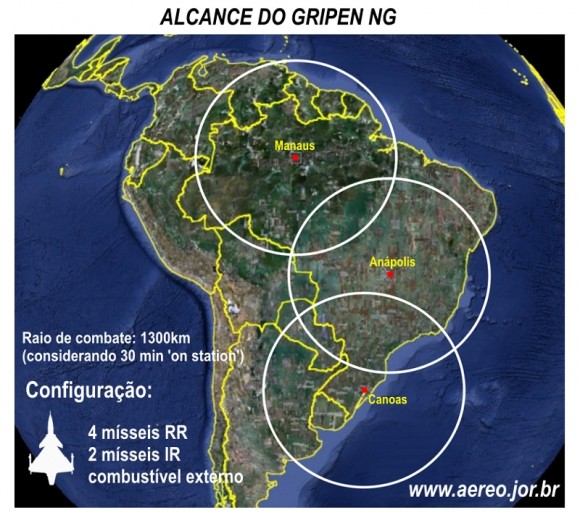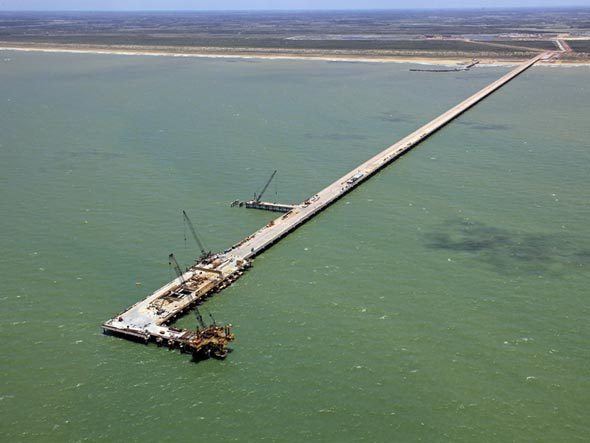I don't care much about the russian/ukranian conflict, but I'd like to challenge the anti-russian consensus in the west with some different ideas to think of:
1> An interesting read about the subject can be found here: http://lastdayswatchman.blogspot.com/2014/03/putin-doesnt-threaten-our-national.html
6> The argument that next will be Poland is not a realist reading of the situation. The sphere of Russia with this conflict is decreasing, not increasing. Before Russia had influence in all of Ukraine through the pro-Russian president, now it will have dominium over Crimea, but the rest of Ukraine is now anti-Russian, so he lost territory here, he lots all of Ukraine except Crimea. That's the real reading of the situation. Russia is not expanding, it just decreased it's loss. And how can you claim that someone who is losing parts of his sphere of influence will next attack a NATO backed country for absolutely no reason at all? Poland has no russian minority, and everything that Russia could want from Poland, Stalin already took, like Lviv. Actually if poles were smart they would not be standing against Putin, but instead they would take this opportunity to retake Lviv ;) That is, if poles were interested in that in the first place. The problem of poles is wishing too much that other people have worse (like wishing Putin will get worse), instead of thinking of how themselves could improve their own power ;)
c> Crimea hasn't even declared independence yet Update: now Crimea seams on the fast track for independence (as a russian puppet-state).
The wrong strategy: The Georgian one
1> An interesting read about the subject can be found here: http://lastdayswatchman.blogspot.com/2014/03/putin-doesnt-threaten-our-national.html
2> Territorial integrity is saint? Well, it wasn't seen like that when the USA was bombing serbia to create Bosnia & Kosovo, was it? I fail to see why Serbia had no right to Bosnia where half the population is serbian. Kosovo is mostly albanian, but it has no history what-so-ever as an independent country, it is a completely new creation, a new muslim country in Europe. On whose best interest the on-going support for Bosnia and Kosovo is? Not on the best interest of europeans I'm sure.
3> If Obama (or any other black politician, and yes, even if he lived in a palace obtained through corruption) was deposed, well, I'm pretty sure the streets would be on fire (no, I'm not exaggerating, there are plenty of historical precedents). But somehow the Russians don't have the right to be angry that the western ukrainians deposed the russian-speaking president in Ukraine?
4> Crimea was indeed part of Russia until 1954 when the Soviet Union dictator, a Ukranian at the time, transferred it to the Ukrainian SSR. And the majority of the population is indeed Russian.
5> Sanctions against Russia? When will the EU support the right of armenians in Nagorno-Karabakh to not be ethnically cleansed by the Azeris? When will the EU grow a spine and threaten Turkey for invading and occupying Northern Cyprus, which amounts to occupying land from a member state from the European Union??? If we are pussys enough to do nothing about that, then what is the logic for threatening Russia for invading a country which is merely a possible future member? Ok, we do know the logic behind this, and the logic is: european people that resist the gay-leftist agenda (like Putin) are evil in the liberal world view.
6> The argument that next will be Poland is not a realist reading of the situation. The sphere of Russia with this conflict is decreasing, not increasing. Before Russia had influence in all of Ukraine through the pro-Russian president, now it will have dominium over Crimea, but the rest of Ukraine is now anti-Russian, so he lost territory here, he lots all of Ukraine except Crimea. That's the real reading of the situation. Russia is not expanding, it just decreased it's loss. And how can you claim that someone who is losing parts of his sphere of influence will next attack a NATO backed country for absolutely no reason at all? Poland has no russian minority, and everything that Russia could want from Poland, Stalin already took, like Lviv. Actually if poles were smart they would not be standing against Putin, but instead they would take this opportunity to retake Lviv ;) That is, if poles were interested in that in the first place. The problem of poles is wishing too much that other people have worse (like wishing Putin will get worse), instead of thinking of how themselves could improve their own power ;)
Anyway, now let me analyze the odds that Putin faces. I think that Putin will face an up-hill battle to annex Crimea, because:
a> The crimean tatars (12% of the population in Crimea) hate russians. Update: The new signs are that they will be expelled if they complain too much.
b> They haven't even taken all Ukrainian bases yet, and Ukraine is much larger and militarily powerful than Georgia. Update: From what I am reading, the full take over shouldn't take long by now, they will wait the Ukrainians to be out of food if necessary.
d> Even if he wins, International recognition might take a century, see how other conflicts like the Armenian-Azeri one drag for ages without resolution.
I think that the correct position for the EU on the subject should be: Let them sort it out alone. Nothing good has ever come from western interventionism and playing the world cop. At least not since western interventionism became the war machine of the liberal ideology.
The wrong strategy: The Georgian one
Merging this topic with the Georgian-Russian conflict, I think that the war in 2008 shows what will happen to Ukraine if they attack. And that's what happens with nearly everyone which gets in a military conflict with Russia, like Napoleon, Hitler and more recently Georgia, experienced. So that's not the solution. To achieve the objective of keeping it's borders intact, a country which borders Russia needs to be clever as a fox, not pride as a lion.
Going out of the original topic a but, one strange thing is that I don't even fully understand what Russia has to win in the conflict with Georgia: why it supports so badly Abkhazia and South Ossetia? The best explanation that I read is because Abkhazians lobbied themselves as pro-russians, although this is kind of silly as they obviously are interested in nothing but themselves. But in the Ukrainian case Russia has a lot more at stake, Crimea is indeed a russian-majority area, and 30% of the population in Ukraine has russian as native language.
Abkhazia and South Ossetia do not pass the test of deserving their own country in my opinion. South Ossetia is not even economically viable, it has only 55.000 inhabitants compared to 700.000 in North Ossetia, and that the Ossetians are split among 2 countries, will that's the case for so many other ethnic groups that I can't even count. And Abkhazians were only 25% of the population in their region before they ethnically cleansed the place, and their country didn't exist for centuries, so just the fact that they killed and expelled so many georgians just makes them undeserving.
The right strategy: The Kazakh one
While the Georgian strategy shows how not to deal with Russia, the Kazakh one shows how to correctly deal with Russia. Georgia is 100% correct to wish to have its borders restored, but in my opinion they had very bad strategies to achieving this. They did not lobby themselves as pro-russians, they lost several wars against weak enemies, tried to join NATO before securing their borders (which is something not realistic and only worked to further make Russia fell threatened, and threatened bears attack!). Now look at Kazakhstan: There is a large number of russians in north kazakhstan, enough to make it a good prize for Putin, but there both countries are like the closest friends ever! The Kazakh president even supported Putin's actions in Crimea, even if they are against the interests of tatars which are related to kazakhs! [source] So that's the correct way to be a good close neighbour of Russia: Don't threaten Russia, agree with everything Putin says, and live nicely. In the long run victory will be achieved by slowly increasing control over the border regions, like the number of russians drops each year in Kazakhstan.
If Ukrainians didn't try to force their way they could have increased control over Crimea slowly over the years until such an invasion would be simply not viable in a future were most inhabitants of the peninsula would be ukrainians. On the other hand it can be claimed that this move by Russia could not have been predicted, at least I didn't think that Putin go for Crimea.
Going out of the original topic a but, one strange thing is that I don't even fully understand what Russia has to win in the conflict with Georgia: why it supports so badly Abkhazia and South Ossetia? The best explanation that I read is because Abkhazians lobbied themselves as pro-russians, although this is kind of silly as they obviously are interested in nothing but themselves. But in the Ukrainian case Russia has a lot more at stake, Crimea is indeed a russian-majority area, and 30% of the population in Ukraine has russian as native language.
Abkhazia and South Ossetia do not pass the test of deserving their own country in my opinion. South Ossetia is not even economically viable, it has only 55.000 inhabitants compared to 700.000 in North Ossetia, and that the Ossetians are split among 2 countries, will that's the case for so many other ethnic groups that I can't even count. And Abkhazians were only 25% of the population in their region before they ethnically cleansed the place, and their country didn't exist for centuries, so just the fact that they killed and expelled so many georgians just makes them undeserving.
The right strategy: The Kazakh one
While the Georgian strategy shows how not to deal with Russia, the Kazakh one shows how to correctly deal with Russia. Georgia is 100% correct to wish to have its borders restored, but in my opinion they had very bad strategies to achieving this. They did not lobby themselves as pro-russians, they lost several wars against weak enemies, tried to join NATO before securing their borders (which is something not realistic and only worked to further make Russia fell threatened, and threatened bears attack!). Now look at Kazakhstan: There is a large number of russians in north kazakhstan, enough to make it a good prize for Putin, but there both countries are like the closest friends ever! The Kazakh president even supported Putin's actions in Crimea, even if they are against the interests of tatars which are related to kazakhs! [source] So that's the correct way to be a good close neighbour of Russia: Don't threaten Russia, agree with everything Putin says, and live nicely. In the long run victory will be achieved by slowly increasing control over the border regions, like the number of russians drops each year in Kazakhstan.
If Ukrainians didn't try to force their way they could have increased control over Crimea slowly over the years until such an invasion would be simply not viable in a future were most inhabitants of the peninsula would be ukrainians. On the other hand it can be claimed that this move by Russia could not have been predicted, at least I didn't think that Putin go for Crimea.







